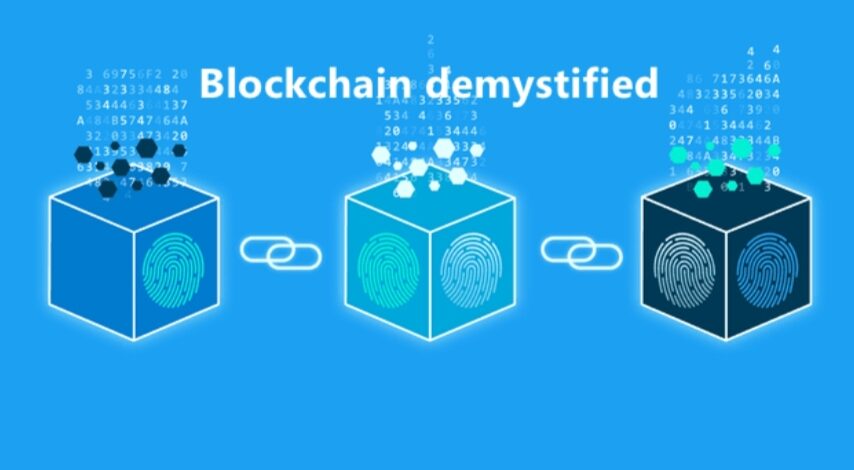In the ever-evolving landscape of technology, blockchain has emerged as a groundbreaking innovation that has captured the imagination of individuals and businesses worldwide. This decentralized ledger system, which underpins cryptocurrencies like Bitcoin and Ethereum, offers promises of security, transparency, and efficiency in various industries. However, with great promises come great risks, and the world of blockchain is no exception.
The past decade has witnessed an explosive growth in the popularity of cryptocurrencies. Bitcoin, the pioneer in this digital gold rush, saw its value skyrocket from virtually nothing to thousands of dollars per coin. This remarkable success story has spurred a multitude of cryptocurrencies to enter the market, each with its unique features and potential for profitability. As a result, blockchain and cryptocurrencies have captured the fascination of investors, traders, and tech enthusiasts alike.
But with the immense promise and profitability of blockchain scan technology comes a dark side – the rise of blockchain scams. As more people flock to the crypto space, opportunistic fraudsters have seized the opportunity to exploit the nascent and sometimes confusing nature of this technology. From Ponzi schemes to fake initial coin offerings (ICOs), the crypto world has become akin to the Wild West, where unsuspecting individuals risk losing their hard-earned money to cunning scammers.
In this article, we’ll delve into the world of blockchain scams, providing you with insights and strategies to stay safe in the midst of the crypto chaos. We’ll explore the various tactics scammers employ, the warning signs to look out for, and most importantly, how you can protect yourself from falling victim to these deceptive schemes. So, fasten your virtual seatbelt and get ready to navigate the treacherous terrain of the crypto Wild West, armed with the knowledge needed to unmask blockchain scams and safeguard your investments.
Understanding Blockchain and Its Vulnerabilities
Blockchain technology has emerged as a revolutionary concept in recent years, promising to disrupt various industries by providing a secure and transparent way to record and verify transactions. To grasp the vulnerabilities associated with blockchain, it’s essential first to comprehend the fundamentals of this technology.
Brief Explanation of Blockchain Technology:
Blockchain is a distributed ledger technology that underlies cryptocurrencies like Bitcoin but has applications beyond digital currencies. At its core, a blockchain is a decentralized and immutable digital ledger that records transactions across a network of computers. These transactions are grouped into blocks, and each block is cryptographically linked to the previous one, forming a chain of blocks. Here are some key features of blockchain technology:
Decentralization: Unlike traditional centralized systems, blockchain operates on a decentralized network of computers (nodes). This decentralization eliminates the need for a central authority, making it resistant to censorship and single points of failure.
Transparency: Transactions recorded on a blockchain are visible to all participants in the network. This transparency ensures that all parties can independently verify the integrity of the ledger.
Security: Blockchain uses cryptographic techniques to secure data, making it extremely challenging for unauthorized parties to alter or tamper with transaction records.
Immutability: Once a transaction is added to the blockchain, it becomes practically irreversible. This immutability is achieved through consensus mechanisms that require network participants to agree on the validity of transactions.
The Decentralized Nature of Blockchain:
One of the core strengths of blockchain technology is its decentralization. In a traditional centralized system, a single entity or organization has control over data and transactions. This centralized control can be a vulnerability because it makes the system susceptible to hacking, fraud, and manipulation.
In contrast, blockchain relies on a distributed network of nodes, each maintaining a copy of the ledger. To tamper with a transaction on a blockchain, an attacker would need to compromise a majority of the network’s nodes simultaneously. This decentralized structure enhances security and reduces the risk of a single point of failure.
However, decentralization is not without its challenges. It can lead to slower transaction processing times and higher energy consumption, particularly in the case of proof-of-work blockchains like Bitcoin. Additionally, decentralized networks require consensus mechanisms, which can be vulnerable to attacks if not properly implemented or if a significant portion of the network’s nodes becomes compromised.
Highlighting the Anonymity and Security Aspects:
Blockchain offers a degree of anonymity and security that can be advantageous in various applications:
Anonymity: While blockchain transactions are transparent, they are often pseudonymous. Users are represented by cryptographic addresses rather than personal information. This provides a level of privacy, as long as the link between an address and a real-world identity is not established. However, it’s worth noting that blockchain analytics and forensic tools have become increasingly sophisticated, potentially compromising this anonymity.
Security: Blockchain’s security is derived from cryptographic techniques, consensus mechanisms, and decentralization. Transactions are secured using cryptographic keys, making it challenging for unauthorized parties to alter or forge data. Additionally, the consensus process ensures that only valid transactions are added to the ledger, reducing the risk of fraud.
Despite these advantages, blockchain technology is not immune to vulnerabilities and risks. Some of the potential vulnerabilities include:
51% Attacks: In proof-of-work blockchains, a single entity controlling more than 50% of the network’s computational power can potentially manipulate the ledger. This is known as a 51% attack.
Smart Contract Vulnerabilities: Smart contracts, self-executing agreements on the blockchain, can contain coding errors or vulnerabilities that could be exploited by malicious actors.
Regulatory and Legal Challenges: Blockchain’s pseudonymity can create challenges for regulators and law enforcement agencies in tracking illegal activities.
Scalability and Energy Consumption: Some blockchains face scalability issues, which can lead to congestion and slow transaction times. Additionally, the energy consumption associated with proof-of-work blockchains has raised environmental concerns.













